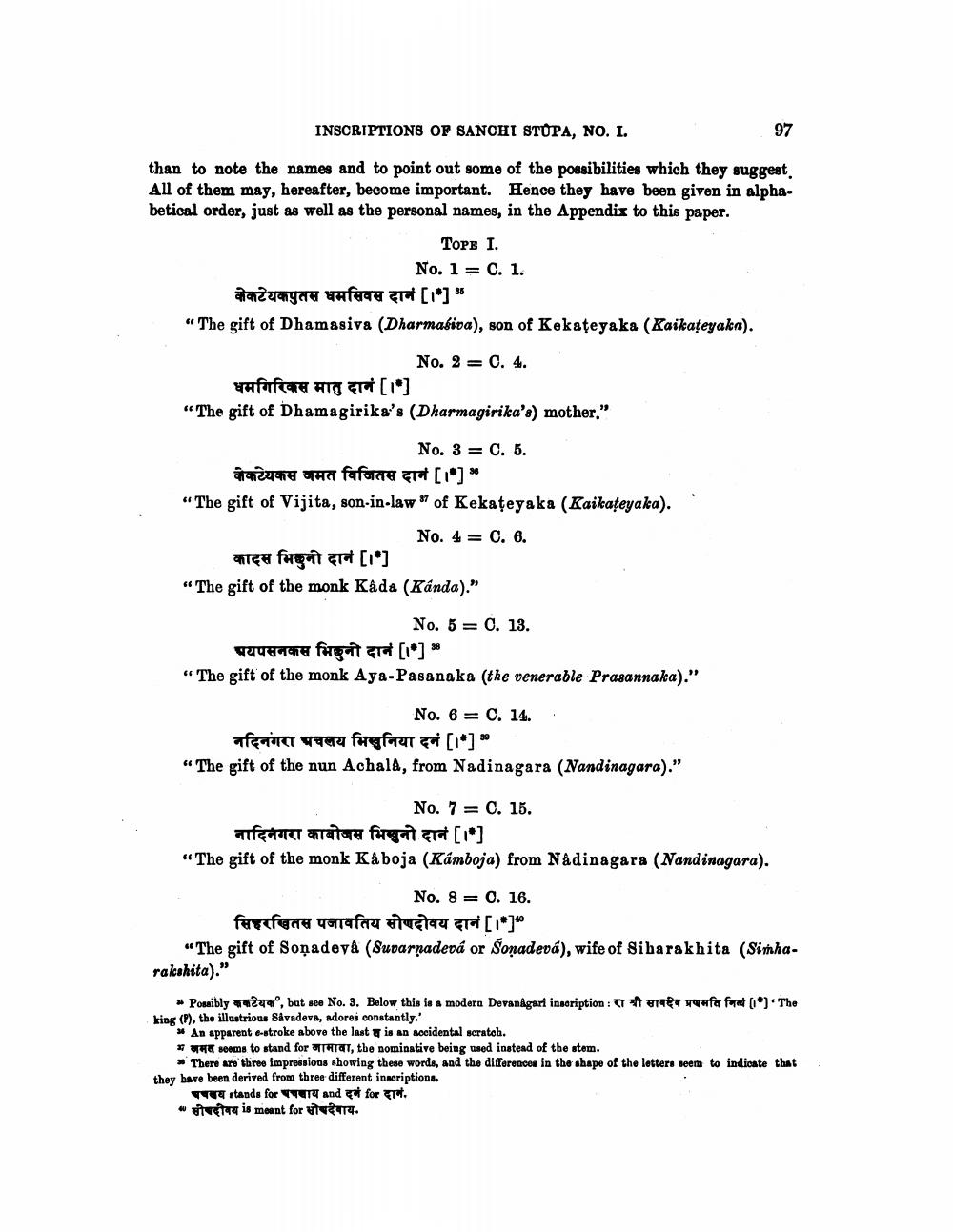________________
INSCRIPTIONS OF SANCHI STUPA, NO. I.
than to note the names and to point out some of the possibilities which they suggest All of them may, hereafter, become important. Hence they have been given in alphabetical order, just as well as the personal names, in the Appendix to this paper.
TOPE I.
No. 1 = C. 1.
केकटेयकपुतस धमसिवस दानं [*] "
"The gift of Dhamasiva (Dharmativa), son of Kekateyaka (Kaikafeyaka).
No. 2 C. 4.
=
धमगिरिकस मातु दानं [1]
"The gift of Dhamagirika's (Dharmagirika's) mother,"
No. 3 C. 5.
कटेयकस जमत विजितस दानं [1] "
"The gift of Vijita, son-in-law" of Kekateyaka (Kaikafeyaka).
No. 4 C. 6.
anteer forget and [1]
"The gift of the monk Káda (Kanda)."
No. 5 C. 13.
अयपसनकस भिडुनी दानं [*]
"The gift of the monk Aya-Pasanaka (the venerable Prasannaka)."
No. 6 C. 14.
=
नदिनंगरा अचलय भिखुनिया दनं [14]
"The gift of the nun Achalà, from Nadinagara (Nandinagara)."
No. 7 = C. 15.
नादिनगरा काबोजस भिक्षुनो दानं [1]
"The gift of the monk Káboja (Kamboja) from Nadinagara (Nandinagara).
97
No. 8 = 0. 16.
सिहरस्थित पजावतिय सोषदोषय दानं [19]"
"The gift of Sonadeva (Suvarpadeva or Soyadevá), wife of Sibarakhita (Sinkarakshila)."
"Possibly, but see No. 3. Below this is a modern Devanagari inscription: raka wafa faat (1) The king (P), the illustrious Såvadeva, adores constantly."
An apparent e-stroke above the last is an accidental scratch.
seems to stand for, the nominative being used instead of the stem.
There are three impressions showing these words, and the differences in the shape of the letters seem to indicate that they have been derived from three different inscriptions.
चचचय stands for चचचाय and दनं for दानं.
* सोचदोवय is meant for सोचदेवाय.




